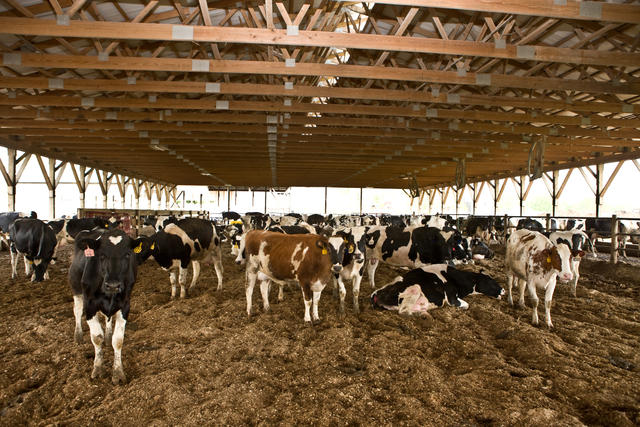As summer nears, livestock heat stress looms
As summer nears, livestock heat stress looms


With summer drawing near, it’s a good time to start thinking about protecting livestock from inevitable heat stress conditions on the way.
“The combination of hot, muggy weather conditions prompts some real concern for humans, as well as livestock and pets,” said Tom Priddy, meteorologist for the University of Kentucky College of Agriculture, Food and Environment. “The livestock heat stress index is a combination of air temperature and humidity. That one-two punch makes it hazardous for people and animals. Dew point temperatures above 65 degrees lead officials to declare conditions dangerous for livestock.”
The Livestock Heat Stress Index helps producers know when heat stress could create a problem for their animals. Periods of heat stress call for livestock producers to be vigilant in making sure their animals are able to withstand the conditions.
UKAg dairy specialist Jeffrey Bewley said the most important things producers can do are to provide cool, clean water and shade, with buildings as open as possible to help keep animals’ internal body temperature within normal limits. Sprinkler systems that periodically spray a cool mist on the animals also are beneficial.
To keep cattle from becoming overheated, producers should not work cattle during periods of heat stress.
“To keep cattle from becoming overheated, you certainly do not want to work them during heat stress conditions—veterinarian work, reproductive checks or vaccinations,” Bewley said.
Producers should also avoid transporting livestock during a heat danger or emergency period. If they must move animals during this time, producers should try to do so with fewer animals per load. Planning trips so producers can load animals immediately before leaving and quickly unload upon arrival can help minimize the risk.
Heat loss for all horses becomes difficult when temperatures exceed 90 degrees, so avoid exercising them during very hot periods. When humidity is high, temperatures much lower than 90 degrees can pose problems. Horse owners can reduce heat stress by scheduling activities during the cooler part of the day and giving horses plenty of water. Transporting horses during the cooler hours of the morning or evening can help. To reduce the risk of dehydration and heat stress, give horses access to water before, during and after transportation in hot weather.
Offer horses frequent drinks of water during work in hot weather. Allowing them to drink during work helps maintain water balance and relieves the urge to drink a lot of water after exercise. After a hard workout, water horses out gradually.
Even non-working horses will double their water intake during hot weather, so be sure plenty of water is available to horses in pastures, paddocks and stalls.
Lactating mares will have especially high water requirements because they are using water for milk production and heat loss.
Hot weather also will increase horses' need for salt because salt is lost during sweating. Heavy rains can "melt" salt blocks in pastures, so salt licks should be checked.
Visit the UK Ag Weather Center website at http://weather.uky.edu to keep up with current weather, forecasts, heat stress indices and more.
Weather

